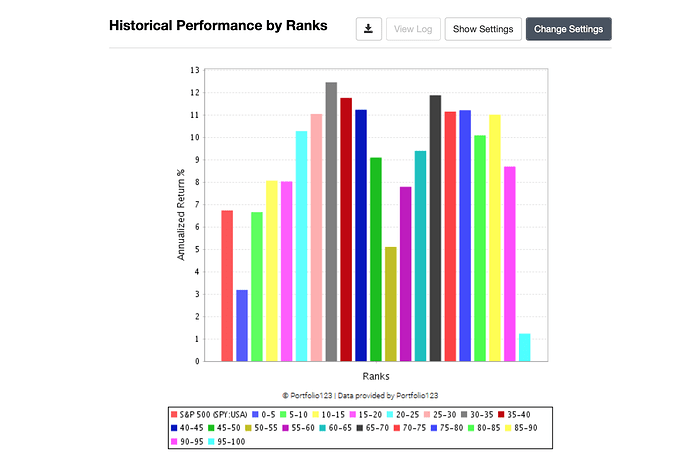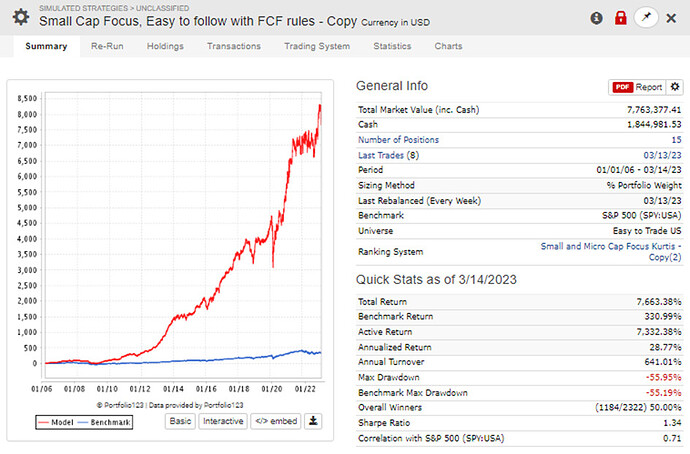All,
(The “12345” in the subject line was to make the mail handling software happy, as it insisted that my title be at least 15 characters long!)
I will have been with P123 for 1 year on Mar 25. I have been getting discouraged in that I don’t think I have progressed all that much over this past year. I had hoped that by now I would be well on my way to developing my own system with better returns and lower drawdowns than what is available via the core ranking systems. I have not succeeded in that. Back in November I decided to start building a ranking system using the spreadsheet named with “list_of_factors” somewhere in the name. I think it was attached to a message from Mr. @marco posted in June 2006. It has a list of stock factors and their performances.
The performance of the ranking after adding 10, 20, 30, 40, 50 and finally factors, while mildly OK, were definitely not even matching the core ranking systems. I was getting ready to just quit the forum, believing it not being intended for someone like me, who has the financial equivalent of pre-algebra, but is for someone more akin to a financial equivalent of differential equations.
Earlier today I looked over the articles I had saved on my computer shortly after joining P123, articles which I had read and had saved for rereading. A good many of the articles were from the blog associated with P123, written by our resident stock market guru/genius Yuval Taylor. (For what it is worth, I know there are other such gurus on the forum.) After seeing those articles I thought “Dummy, you need to reread those articles before throwing in the towel !”
So I am asking for your thoughts as to what I should do? Should I keep plugging at it, maybe getting things to work in a while, or is it best to cut my losses and go use something else like AAII? All opinions are welcome.
Cary



